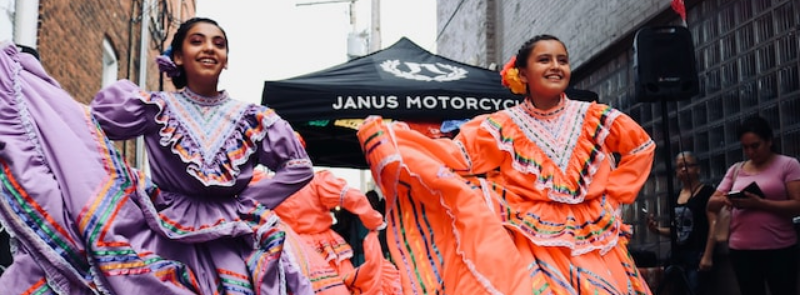
When It Occurs
Annually Mid of September to Mid of October
Official Website
Timeline
Days Passed (790)
# Hashtags
#HispanicHeritageMonth #HispanicCulture
Hispanic Heritage Month, spanning from the latter part of September to the first half of October, originated to celebrate the rich history, culture, and contributions of Hispanic-Americans. This includes individuals whose ancestry traces back to Spain, Mexico, the Caribbean, Central, and South America. Communities commemorate the accomplishments of Hispanic and Latino Americans through festivals and educational events.
History of Hispanic Heritage Month
- Origins: Hispanic Heritage Month originated in 1968 as Hispanic Heritage Week under President Lyndon B. Johnson. It was expanded to a month-long celebration by President Ronald Reagan in 1988. The official observation was enacted into law on August 17, 1988.
- Significance of Dates: The celebration starts on September 15 to coincide with the anniversary of independence for several Latin American countries: Costa Rica, El Salvador, Guatemala, Honduras, and Nicaragua. Mexico celebrates its independence on September 16, and Chile on September 18. The month-long period also includes Columbus Day or Día de la Raza on October 12, which is significant in Hispanic cultures.
Significance of Hispanic Heritage Month
- Cultural Recognition: The month serves as a recognition of the profound impact Hispanic and Latino Americans have had on the culture, history, and achievements of the United States.
- Diversity and Unity: It highlights the diversity within Hispanic and Latino communities, celebrating their unique cultures, languages, traditions, and histories while promoting unity.
- Education and Awareness: Hispanic Heritage Month provides an opportunity to educate others about the contributions and experiences of Hispanic and Latino Americans, fostering a greater understanding and appreciation of their role in shaping the nation.
Celebrations and Activities
-
Cultural Events:
- Festivals and Fairs: Many cities host festivals, fairs, and parades that feature Hispanic music, dance, food, and art. These events often include performances by local and international artists.
- Cultural Exhibits: Museums and cultural institutions organize exhibits showcasing Hispanic art, history, and cultural artifacts. These exhibits provide insight into the contributions of Hispanic and Latino Americans.
-
Educational Programs:
- Workshops and Lectures: Universities, schools, and community centers host workshops, lectures, and panel discussions on topics related to Hispanic history, culture, and current issues.
- Film Screenings: Film festivals and screenings feature movies and documentaries that highlight Hispanic stories and experiences.
-
Community Engagement:
- Volunteer Opportunities: Community organizations often coordinate volunteer activities and service projects that focus on Hispanic communities and issues.
- Support Local Businesses: Promoting and supporting Hispanic-owned businesses is a way to celebrate and uplift the community economically.
-
Family Celebrations:
- Traditional Meals: Families celebrate by preparing traditional Hispanic dishes and sharing meals that reflect their heritage.
- Storytelling and Music: Sharing stories, music, and traditions within families helps preserve and pass down cultural heritage to younger generations.
Contributions of Hispanic and Latino Americans
- Historical Figures: Recognize the achievements of historical figures such as César Chávez, a labor leader and civil rights activist; and Dolores Huerta, a labor leader and civil rights activist who co-founded the National Farm Workers Association.
- Arts and Entertainment: Celebrate the contributions of artists, musicians, and entertainers like Frida Kahlo, a renowned painter; Lin-Manuel Miranda, a composer, and playwright; and Selena Quintanilla, a beloved singer.
- Science and Technology: Highlight the accomplishments of scientists and innovators like Ellen Ochoa, the first Hispanic woman to go to space; and Luis Walter Alvarez, a Nobel Prize-winning physicist.
- Politics and Public Service: Acknowledge the influence of politicians and public servants like Sonia Sotomayor, the first Hispanic Supreme Court Justice; and Alexandria Ocasio-Cortez, a U.S. Representative.
Fun Facts about Hispanic Heritage Month
- Population: Hispanic and Latino Americans constitute the largest ethnic minority in the United States, making up over 18% of the population.
- Language: Spanish is the second most spoken language in the United States, with over 41 million native speakers.
- Influence: Hispanic culture has significantly influenced American cuisine, music, dance, fashion, and more, with contributions seen in everyday life across the country.
How to Get Involved
- Attend Events: Participate in local Hispanic Heritage Month events and activities to learn more about Hispanic culture and contributions.
- Educate Yourself: Read books, watch films, and explore resources that highlight Hispanic history and experiences.
- Support Organizations: Donate to or volunteer with organizations that advocate for Hispanic and Latino communities.
- Share Stories: Use social media to share stories, highlight contributions, and promote awareness of Hispanic Heritage Month.
Conclusion
Hispanic Heritage Month is a vibrant and meaningful celebration that honors the rich cultural heritage and significant contributions of Hispanic and Latino Americans. Through various events, educational programs, and community activities, this month offers an opportunity to appreciate the diverse cultures that have shaped and continue to influence the United States. It’s a time to recognize, celebrate, and support the Hispanic and Latino communities, fostering greater understanding and unity.


